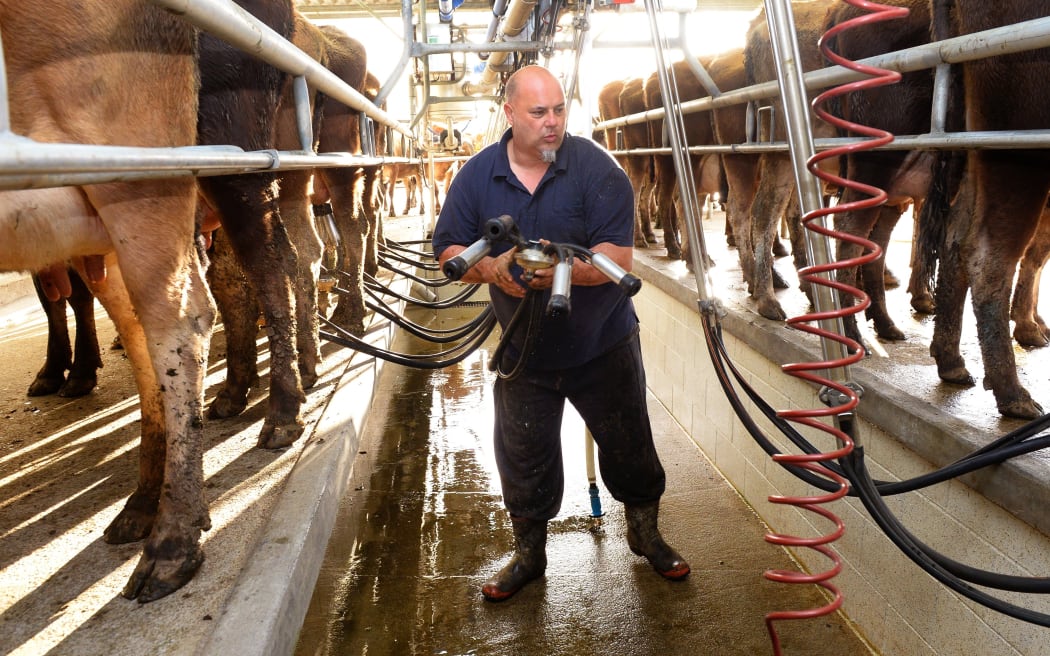Dairy prices are continuing their downward trend, taking another fall in the overnight global dairy trade auction, the sixth since mid-March.

Low dairy prices could open the door for new sharemilkers. Photo: AFP
The price of whole milk powder, which largely determines Fonterra's payout to farmers, fell 3.1 percent to US$2,309 a tonne.
All other products decreased in price, including skim milk powder by one percent to to US$1,982.
The average price index also decreased by 4.3 percent.
Last week volatile dairy prices and an unexpected surge in New Zealand's milk supply in April led to Fonterra reducing its forecast payout to $4.40 a kilo of milk solids for this season, and set what it called a cautious opening price of $5.25 a kilo for next season.
Some dairy analysts said the fall came as a surprise with their expectations that an increase was on the horizon, but others said a further drop was just a sign that supply was continuing to outweigh demand.
The amount of product put up for auction was slightly up on the last one partly due to an unexpected increase in New Zealand's milk supply in late April. Analysts said that factor would also have contributed to a drop in prices.
A sharp 10 percent decrease in the price of butter surprised AgriHQ's analyst, Nick Handley, who said strong demand for milk fat products from markets such as Europe and the United States was expected to keep prices firm.
"Butter in the European and US markets has been a little bit firmer recently and oceania product has been considerably cheaper, so that was one of the main reasons why the general consensus was that prices were likely to firm or at least hold steady at this event.
"Our butter already looked to be a bit of a bargain, particularly for US importers but it's an even better bargain now."
Mr Handley said AgriHQ's Futures market, which has been a relatively accurate forecaster of global dairy trade prices, had anticipated that whole milk powder prices would rise. However, that wasn't the case.
"It's certainly a surprising one ... the NZX Dairy Futures Market does settle to GDT prices, so certainly a few market participants thought the market was going to at least stay steady or firm.
"If we take whole milk powder as an example, it looked the market was expecting to trade at around $2450 a tonne, when in fact it traded $2225, so more than $200 a tonne difference there."
Mr Handley said when New Zealand's supply of milk began to wind down, it has quite an impact on global supply, which could possibly help prices to pick up.
Rabobank's director of dairy research for New Zealand and Asia, Hayley Monyihan said the GDT price drop didn't come as a surprise to her.
"It reflects the continued weakness in global markets, and the fact that buyers are generally well stocked up and not needing to come back to the market for big volume. It's also reflecting at this time of the year, buyers also look to product out of the European Union as spring and early summer production gets underway in Europe, which means plenty of product available and less need for product from the southern hemisphere."
Hayley Moynihan said it was likely buyers wouldn't be back for significant volumes of dairy product until the end of the year.
She said prices for skim milk powder were now very close to the levels at which the European Commission would start to intervene in the market.
"That tends to set a floor for those products, so while we may see some further smaller drops we wouldn't expect substantial falls."



